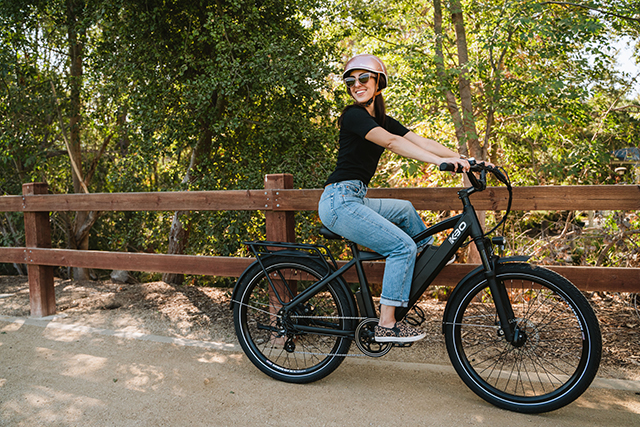Boulder’s Locomotive Love Affair
02 Aug 2023
Unraveling the rich history of the Rockies’ railroads
By Laura K. Deal

Unless you’re a railway aficionado, you probably only notice trains when they’re halting traffic, but the railed routes of those freights have a storied history. They comprise some of the earliest infrastructure in Boulder County—and they’ve helped build many Front Range towns, which boomed during the Gold Rush.
A Legacy on Steel: 19th Century Beginnings
In 1873, a remarkable transformation of the Front Range began with 16 railroads weaving their way in and around Boulder. Among the pioneers were railroad companies Colorado Central and Denver & Boulder Valley, heralding an era of steam and electric trains in what is now Boulder County.
Even the man behind the Cheyenne Mountain Railway in Colorado Springs proposed building a scenic and well-illuminated railway to the top of Flagstaff Mountain to attract tourists. While the Flagstaff railway never materialized, a “wye” did—in the area that is now 30th and Pearl. The triangular configuration of the track allowed routes to intersect and trains to crisscross through the city.
As the population surged during the Gold Rush, railroads proved essential, not only connecting Boulder to Front Range towns but also penetrating deep into the mountains to access precious gold and silver mines.
The Switzerland Trail of America
The “Switzerland Trail of America,” as the track came to be called, linked Boulder to mining towns with a narrow-gauge railroad, since the mountain canyons were too winding for standard gauge track and wide engines. It owes its existence to the sweat and toil of Black workers, who amid challenges and adversity, laid the track using shovels, black powder and muscle power.
In May of 1894, tragedy ensued: A terrible flood in Boulder Canyon washed out much of the railbed and bridges of the narrow-gauge track. The railroad, optimistically named the Greeley, Salt Lake & Pacific, had only ever reached the mining towns above Boulder and, after the flood, ceased operations altogether. The lure of the riches of the mines proved irresistible, however, and soon the Colorado & Northwestern Railway built a railroad from Boulder to Sunset and on to Ward.
The Age of Passenger Trains
By the early 20th century, rapid population growth beckoned dedicated passenger trains. The Colorado & Southern (C&S) Railway built electric interurban routes that connected Denver, Boulder and surrounding towns. The Denver & Interurban (D&I) railway, established by C&S in 1904, was eventually franchised and became the tramway of the Front Range. The Kite Route, as it came to be known, powered motor cars with 11,000 volts of AC electricity from a Lafayette station. Connecting Denver to Boulder, it traced its way through Louisville and Marshall, ushering in a new era of accessibility and exploration.
The D&I Railroad soon carried tourists and picnickers to Boulder and into the mountains beyond. One railway brought excursionists to the natural springs swimming pool in Eldorado Canyon.

The Rise and Fall: Automobiles and Tragedy
The advent of automobiles threatened the dominance of passenger trains. And, on Labor Day, in 1920, two passenger trains collided head-on in a northern Denver suburb, Globeville. The tragic crash left a profound impact on the D&I Railway, leading to its eventual downfall. As enthusiasm for rail travel waned and despite efforts to rebuild, the inevitable shift to buses marked the end of an era.
Modern Relics: Traces of a Storied Past
While the golden age of railroads may have faded, Boulder County still echoes with whispers of its railway legacy. Explore the path that once harbored trains along Boulder Canyon, although most signs of the rail lines are long gone. Even so, you can still find a bit of the wye, now used by BNSF for freight, intersecting Pearl Parkway just east of Junction Place.
While you’re there, discover the old Union Pacific Depot, now a vibrant eatery, Roadhouse Boulder Depot, saved from demolition in 1973 and landmarked in 1979.
For the ardent rail enthusiast, Engine No. 30 of the Colorado & Northwestern Railway awaits at the Colorado Railroad Museum in Golden. Originally, it resided in Boulder’s Central Park, as a monument to Boulder’s early pioneers. However, it was moved after vandals used dynamite to destroy the caboose in 1958 and it was further damaged by arsonists in 2007.
The Promise of Rail Anew
Amidst the echoes of the past, hope lingers for a renaissance of passenger trains. The much-awaited Northwest Rail line holds the potential to recapture the pomp and pleasure of train travel. While, today, it only connects Denver to Westminster, plans are scribed to build a line that connects Denver’s Union Station to Longmont, running parallel to US 36 to Boulder, then along SH 119 to Longmont. As the anticipation builds, we await with bated breath for the moment when the rail line finally leaves the station.












